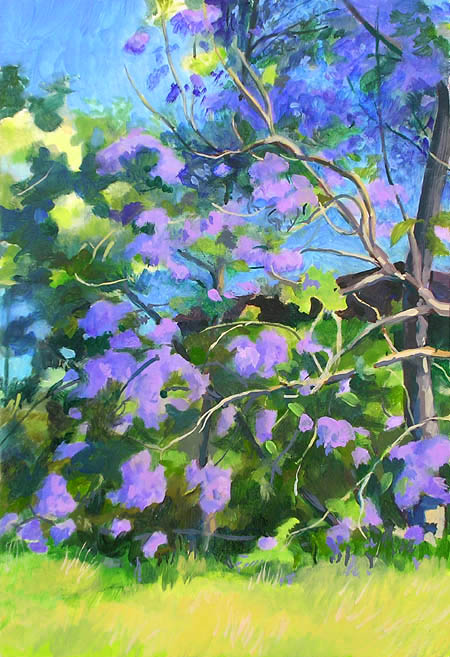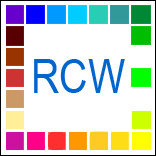This is about a technique unique to this media.
This is the oldest turpentine based media dating back to Roman times, when pre-made wax and mastic colors were kept in small jars.
Cera colla was the previous leader in the Paint Wars, that was a water based wax paint from Egypt. This media was easier to paint with.
You can follow the Paint Wars through-out time in the RCW Painting on Location Color Course. Just use the browser search for the term "Paint Wars"
I degress.. This is all about Turpentine, Wax and Mastic. The most painterly media of all.
Great for wall murals or decorations. It's not a blending media like oil is, it's more like adding a new stroke because it sets so quickly. That's why it looks so painterly, each stroke shows.
This is an amazing media. It's so quick to set so it's easy to layer upon. But at the same time, it will wipe clean and change colors if you take two or three wet strokes over the set paint. This is because of how the set color re-dissolves so quickly.
My paintings are a series of mistakes that I am continually correcting until I'm finished,
Set and dry are two different things here. Usually the setting is after the dry to the touch, like in fresco. Here with wax and damar it is quickly dry to the touch but very re-dissolvable. This makes it very easy to work into or on top of the painting. Easy to change or wipe clean.
When oil paint starts to set, you leave it alone. Painting on top of it will cause uneven shrinking and cracking will happen.
Wax and mastic share this lifting technique with balsams. With cera colla, water will lay down the color, ammonia will pick it up.
All mastic and balsam resins dry differently than oil. Their film dries as a whole, throughout, without a skin, and can be dissolved with a solvent. Because of this fact, and the fact that they are sticky, stand, balsam or resin layers can be applied over any stage of drying paint. Oil only paint, may chip off of an under layer that was not completely dry because it will still shrink more. Oil is not a good binder by itself but mastic, stand oil and alkyd oil mediums are.
9:15. Today is sunny, I think I can get farther ahead by changing the painting to a sunny day. The sky is now blue. That is going to make it easier then when it was light gray.
First I'll wash the painting with water, no problem, all the protein dust absorbed water and flushed right off. Go for the gold!
Using turpentine and a little stiff brush brought me back to white. Similar to acrylics when I paint two coats of white on mistakes or changes.
Pigments so far are.. Opaque Lemon Yellow, Old holland Indian yellow org/side and brn/side. the brown side is for greens, the orange side is for reds. Blocks Venetian red, Naples yellow deep by Mussini, Quin. Magenta by Daniel Smith, Diox. purple by Liquitex, Ult. blue deep by Mussini, Thalo blue by Grumbacher, Thalo green Y/s by Grumbacher, Old Holland opaque yellow green.
Dick Blick has a chisel brush Series 66, #2 by Master Stroke.
Isaby has a Extra long and full sable liner, #8, a truly great brush.
Another great brush I'm using in this painting is the Langnickle "Shortie" Series 64, #4. This is a round ferrule with chiseled flat end hair. This brush is no longer available but I found a new supplier in Australia I want to check out.
Well I bought what they had but the hairs were just a little too long, great for sign painting though.
This morning I was on location by 6:30, I changed all the colors and shadows to fit this morning view, the roof in the background was still in shadow. Flowers above my eye level showed a bottom shadow, below my eye level had no shadow showing.


 Home
Home

 Help
Help

 Search
Search

 Login
Login

 Register
Register

 Broadcast Message to Admin(s)
Broadcast Message to Admin(s)

 « Home
« Home  ‹ Board
‹ Board  Top of this page
Top of this page 
 Pages: 1
Pages: 1

